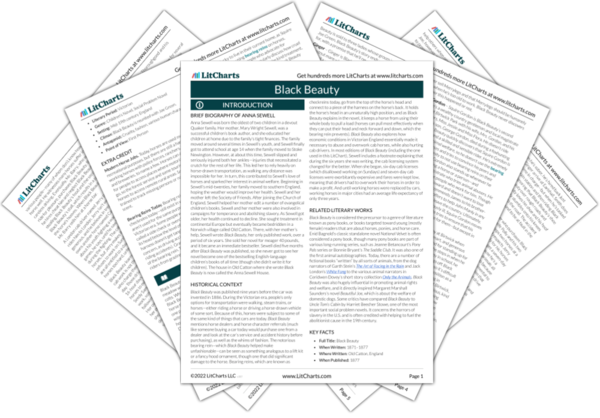Duchess believes that while horses should do the best they can, they’re also powerless. They have no control over who their owners are, and whether those owners are kind and compassionate like their current master, or whether they’re cruel or ignorant. And interestingly, she suggests that it’s the careless and ignorant men who do the most damage, rather than the outright cruel ones. This becomes one of the novel’s main points, and it implies that for people who want to treat horses well, the best way to do that is to educate oneself on proper horse care.
